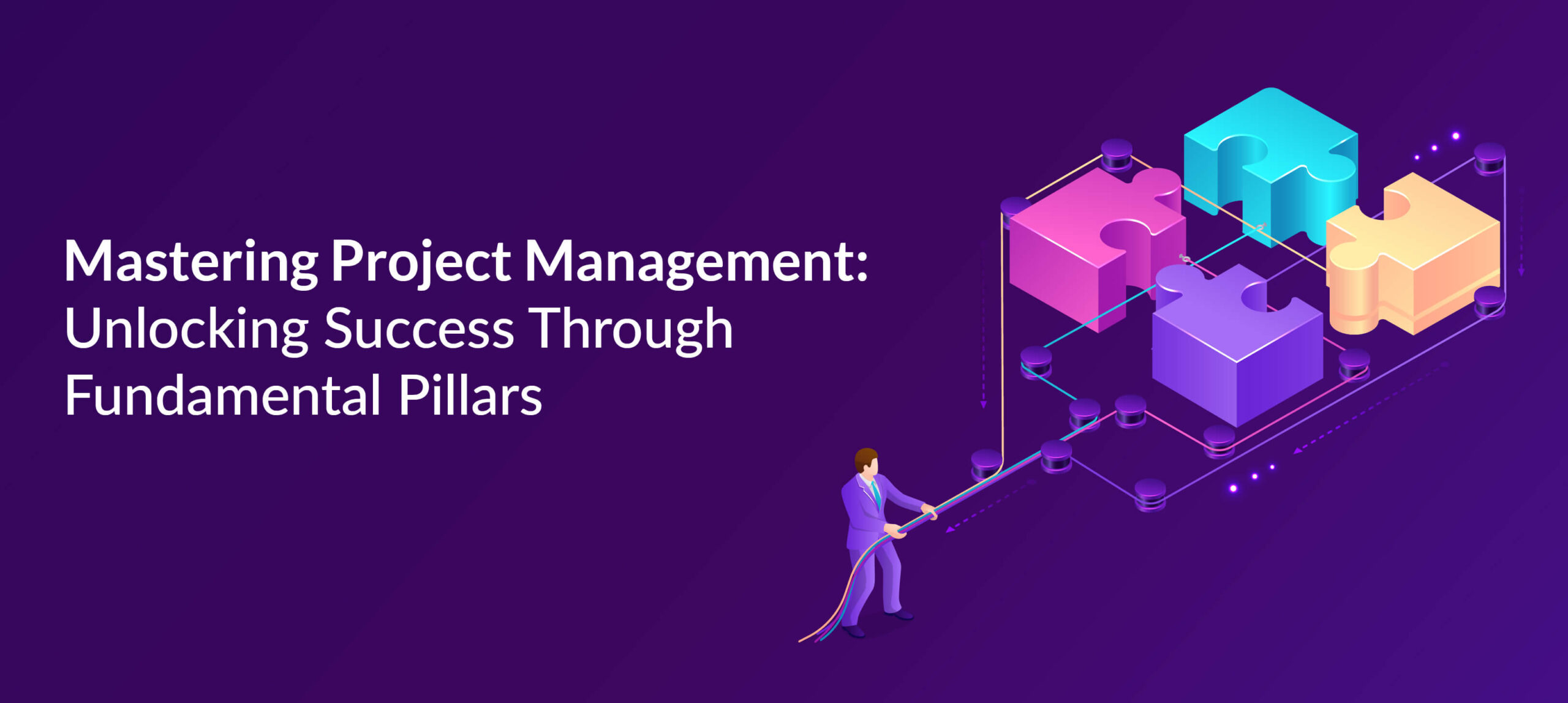Project management is the backbone of any business; it’s the blueprint to reach strategic goals effectively. In the current world environment, volatility and competitiveness are a norm. Mastering the different pillars of project management will enable you to enhance your capability to deliver projects on time, within budget, and with quality. The blog discusses the foundational pillars of robust project management that will help ensure a project begins successfully and achieves its intended outcomes.
Important Pillars of Project Management
Defined Scope of Work
The project scope sets the foundation for every subsequent action. It is essential to pinpoint what is to be included and, just as importantly, what is not to be included. Good scope management avoids the infamous “scope creep” that has derailed even the best-planned projects.
Incorporating phase-gate methodologies helps establish checkpoints to review and validate the project scope at various stages, ensuring alignment with objectives. By having clear boundaries, deliverables, and stakeholder agreement, the project manager is better equipped to set the stage for timely and successful delivery.
Clear Goals and Objectives
Setting clear goals and objectives is critical for directing efforts towards attaining specific milestones within the project. Goals provide a high-level view of desired outcomes, while objectives offer a detailed roadmap for achieving those results. For example, in a software development project, the goal may be to launch a product within six months, with objectives focusing on iterative releases, stakeholder reviews, and testing cycles.
By integrating critical path analysis, project managers can identify key tasks, dependencies, and bottlenecks, ensuring that resources are aligned to maintain progress toward the goals. Clearly defined goals and objectives prevent misalignments and enable every team member to understand their role and purpose.
Defined Roles and Responsibilities
Effective role identification and assignment are essential pillars of project management. Using frameworks like DACI (Driver, Approver, Contributor, Informed) or RACI (Responsible, Accountable, Consulted, Informed) helps clarify decision-making responsibilities and ensures that all team members understand their specific roles.
This clarity enhances accountability and avoids duplication of effort. Furthermore, mapping critical dependencies between roles ensures that team members can coordinate seamlessly, minimizing delays caused by unclear handoffs or overlapping responsibilities.
Unambiguous Planning
A robust project plan serves as the backbone of any successful project, providing a clear route through its life cycle. Breaking the project into distinct phases using phase-gate methodologies ensures that complexity is managed and progress is reviewed systematically.
Each gate acts as a decision point, allowing teams to assess milestones, address risks, and adapt as needed before moving forward. Incorporating critical path analysis into planning ensures that essential tasks and dependencies are prioritized, helping avoid delays and keeping the project on track. Risk assessments and mitigation strategies within the plan further enhance agility and responsiveness to change.
Clear Milestones
Milestones are critical for pacing projects and maintaining team morale. Each milestone represents a measurable achievement and serves as an opportunity to review progress and address any bottlenecks. Incorporating phase gates at key milestones ensures thorough evaluations before advancing to the next stage.
Additionally, mapping dependencies around milestones helps avoid cascading delays by ensuring that prerequisite tasks are completed on time. Clear, achievable milestones prevent burnout, foster a sense of accomplishment, and keep teams focused and motivated.
Stakeholder Communication
Communication is the thread that ties all project activities together. A well-defined communication plan outlines how information will be shared among stakeholders and team members, ensuring alignment and transparency. Regular updates, meetings, and collaborative tools facilitate open information flow.
To avoid delays, the communication plan should include mechanisms for escalating issues, tracking critical path progress, and resolving dependencies quickly. Proactive and transparent communication fosters trust and ensures all stakeholders remain informed and engaged throughout the project.
Risk Management
Effective risk management involves identifying potential threats that might impact the project and preparing mitigation strategies. Phase-gate methodologies provide a structured approach to reviewing risks at regular intervals, ensuring timely adjustments.
By closely monitoring dependencies and the critical path, project managers can proactively address risks that could cause delays. Additionally, establishing contingency plans helps ensure continuity if unexpected challenges arise. Robust risk management minimizes disruptions and builds resilience into the project execution process.
Conclusion
The pillars of project management form a guide that, when religiously followed, guarantees the success of the projects. These foundational elements help project managers and their teams simplify complicated tasks within the project space and assure them that they are able to accomplish their objectives with incredible success. Understanding and then implementing these pillars is key in achieving excellence in project management.
Kytes PSA Integration
By implementing Kytes PSA in your project management practices, your team’s productivity and strategic alignment will increase. Kytes PSA provides advanced tools to underpin the pillars of project management for diverse methodologies, including agile and Kanban, through which elements like project financial management, resource allocation, and workplace productivity in general are enhanced.
By choosing Kytes PSA, your organization will comfortably meet expectations of project delivery by optimally deploying your resources and ascertaining a high level of client satisfaction. Book a demo today to see how Kytes PSA can transform project management and collaboration within your organization.





